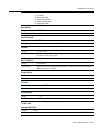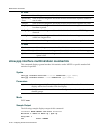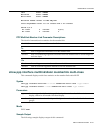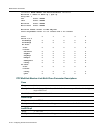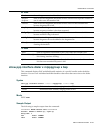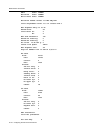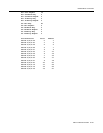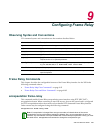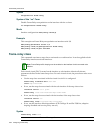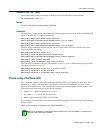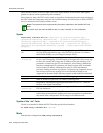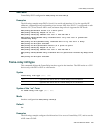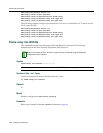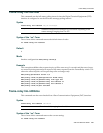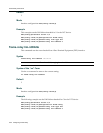
XSR CLI Reference Guide 9-83
9
Configuring Frame Relay
Observing Syntax and Conventions
CLIcommandsyntaxandconventionsusethenotationdescribedbelow.
Frame Relay Commands
Thischapterdescribestheconfigurablefeat uresofthe FrameRelayinterfacefortheXSRinthe
followingcommandsubsets:
• “FrameRelayMapClassCommands”onpage 9‐95
• “FrameRelayClearandShowCommands”onpage 9‐102
encapsulation frame-relay
ThiscommandenablesFrameRelayencapsulationonaninterfaceusingIETF(RFC‐2427)
encapsulationformat.Whenconnectingtonon‐XSRservers,besuretheremoteendisconfigured
forIETFencapsulationunlesstheremoteendcanhandleIETF‐formattedFrameRelayheaders.
Otherroutersmaybeconfiguredusingthefollowingcommand:
encapsulation frame-relay IETF
Convention Description
xyz Key word or mandatory parameters (bold)
[x] [ ] Square brackets indicate an optional parameter (italic)
[x | y | z] [ | ] Square brackets with vertical bar indicate a choice of values
{x | y | z} { | } Braces with vertical bar indicate a choice of a required value
[x {y | z} ] [{ | } ] Combination of square brackets with braces and vertical bars indicates a
required choice of an optional parameter
(config-if<xx>) xx signifies the interface type, class map, policy map or other value you specify;
e.g., F1, G3, M57, S2/1.0, Node Name., DLCI class name
Next Mode entries display the CLI prompt after a command is entered.
soho.enterasys.com Italicized, non-syntactic text indicates either a user-specified entry or text with
special emphasis
Note: If encapsulation is changed from one type to another, all related values of the current
encapsulation and any sub-interface settings are deleted. Also, once encapsulation is set on an
interface, any sub-interface of that port created later is automatically encapsulated. Finally, you must
first enter the no encapsulation command to change the encapsulation type.



